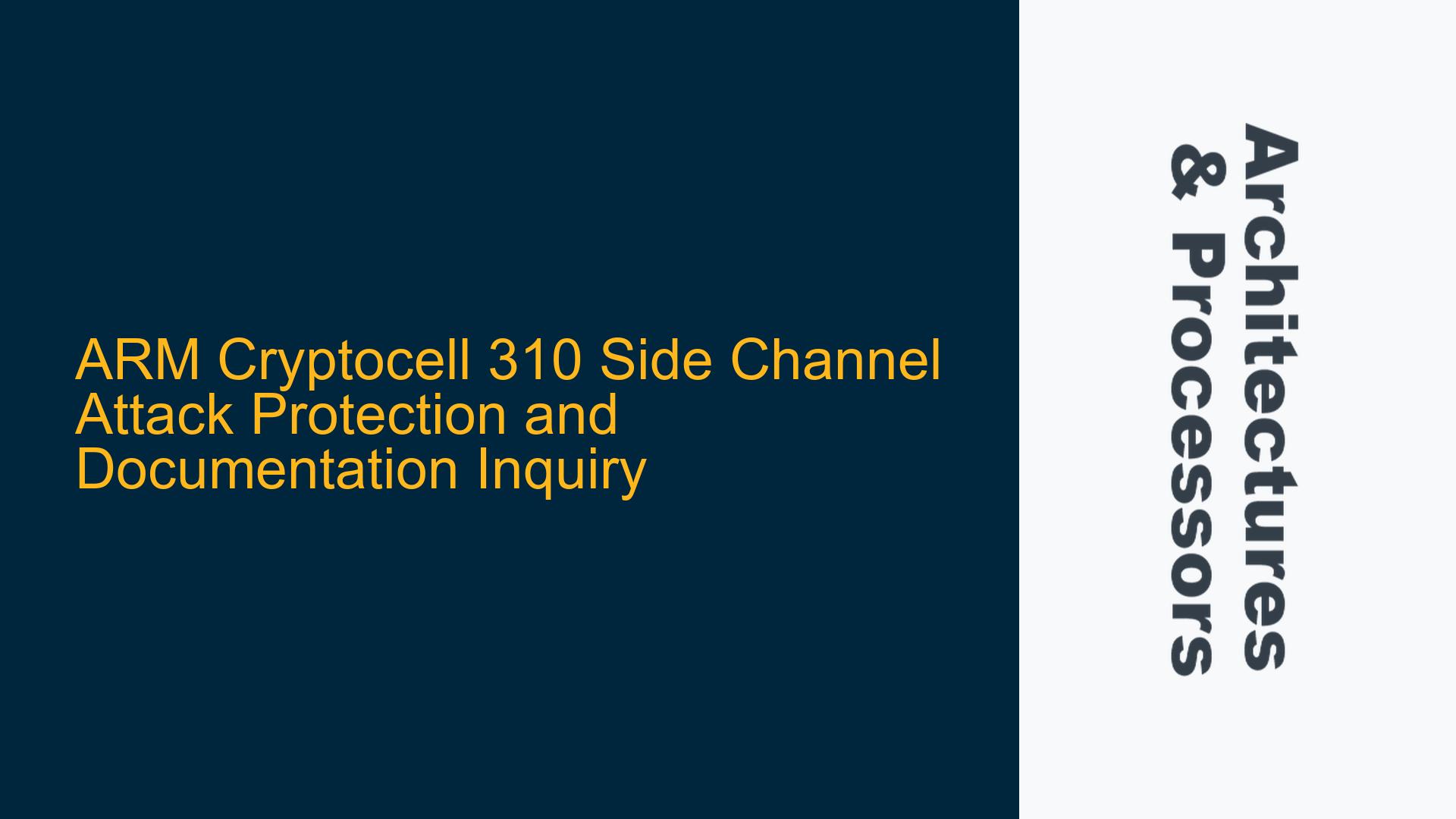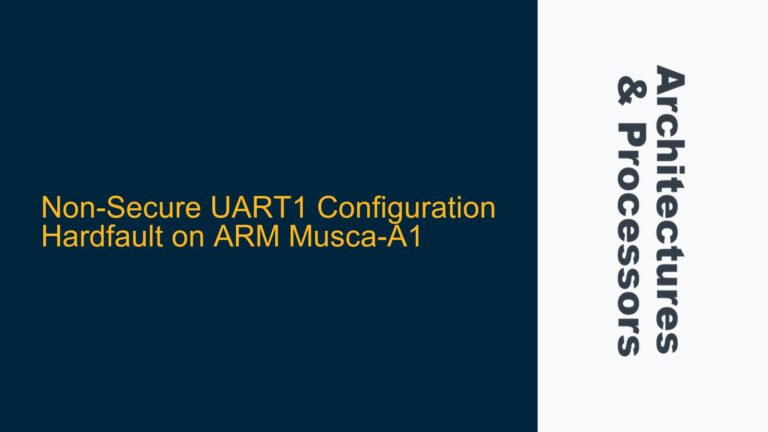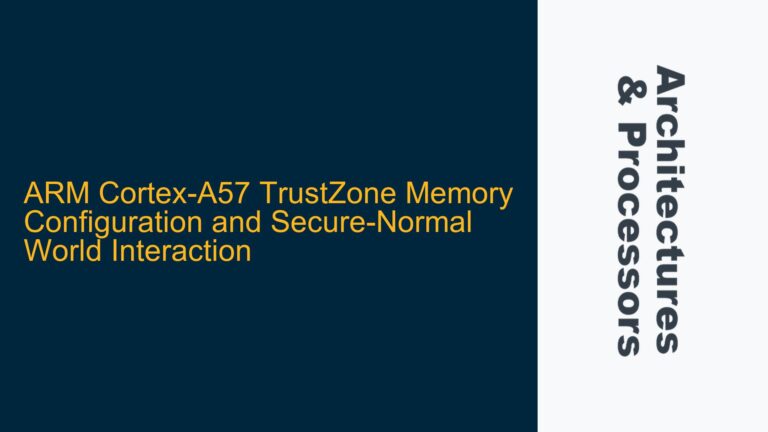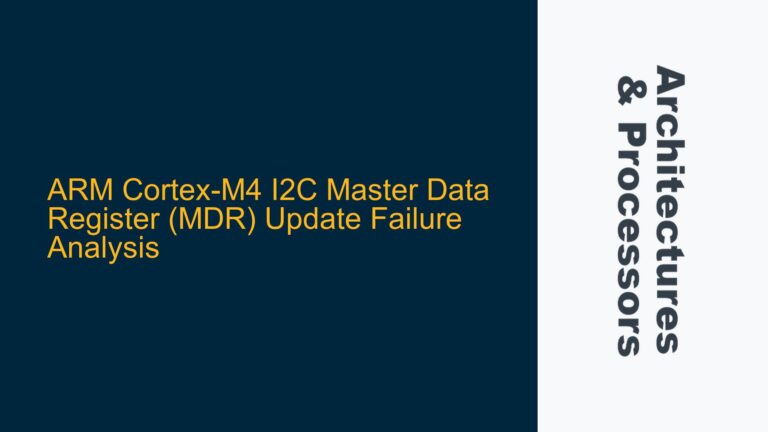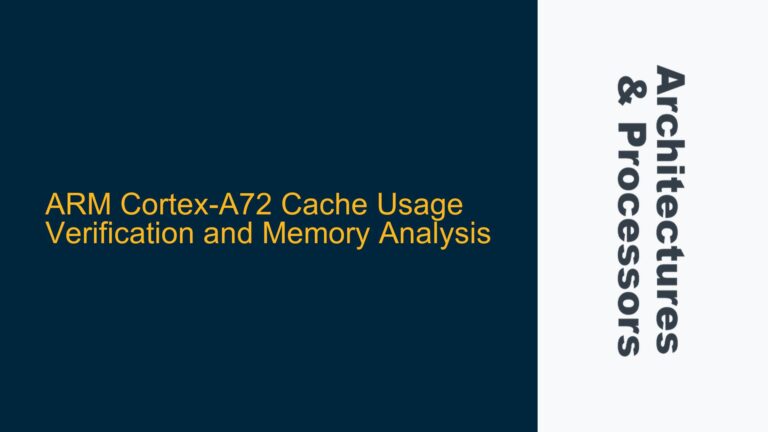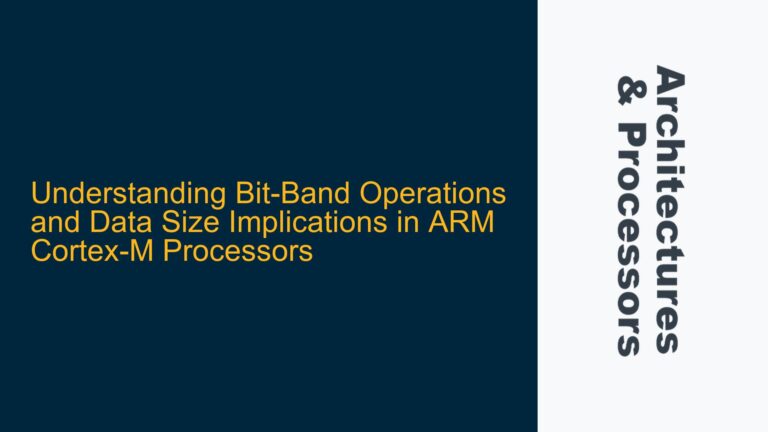ARM Cryptocell 310 Side Channel Attack Vulnerabilities
The ARM Cryptocell 310 is a hardware-based security subsystem designed to provide cryptographic operations and secure key storage for ARM-based SoCs. One of the critical concerns in cryptographic implementations is protection against side channel attacks, particularly timing analysis and differential power analysis (DPA). Timing analysis exploits variations in the execution time of cryptographic operations to infer secret keys, while DPA leverages power consumption patterns during cryptographic computations to extract sensitive information. The Cryptocell 310 is marketed as a secure element, but the extent of its side channel attack protection mechanisms is not always explicitly detailed in public documentation.
The Cryptocell 310 integrates cryptographic accelerators, secure key storage, and a secure operating environment. It supports a wide range of cryptographic algorithms, including AES, RSA, ECC, and SHA. However, the effectiveness of these algorithms in real-world applications depends heavily on the implementation’s resistance to side channel attacks. Without proper countermeasures, even the most robust cryptographic algorithms can be compromised through side channel analysis.
The lack of publicly available detailed technical documentation exacerbates the challenge of evaluating the Cryptocell 310’s side channel attack protections. Engineers and security architects often rely on technical reference manuals (TRMs) and design documentation to assess the security posture of hardware components. In the case of the Cryptocell 310, the absence of comprehensive documentation makes it difficult to determine whether the hardware includes specific countermeasures such as constant-time execution, randomized execution delays, or power consumption masking.
Potential Gaps in Side Channel Attack Countermeasures
The primary concern regarding the ARM Cryptocell 310’s side channel attack protection lies in the potential gaps in its countermeasures. Timing analysis attacks exploit variations in the execution time of cryptographic operations. For example, if a modular exponentiation operation in RSA takes different amounts of time depending on the value of the secret key, an attacker can use these timing differences to infer the key. Similarly, differential power analysis relies on the correlation between power consumption patterns and the internal state of the cryptographic algorithm. If the power consumption of the Cryptocell 310 varies predictably with the data being processed, an attacker can use statistical methods to extract the secret key.
One possible cause of vulnerability is the absence of constant-time implementations for cryptographic algorithms. Constant-time implementations ensure that the execution time of cryptographic operations does not depend on the input data or secret keys. If the Cryptocell 310 does not enforce constant-time execution, it may be susceptible to timing analysis attacks. Another potential issue is the lack of power consumption masking techniques. Power masking involves adding noise or randomization to the power consumption patterns to make it difficult for an attacker to correlate power traces with the internal state of the cryptographic algorithm. Without power masking, the Cryptocell 310 may be vulnerable to differential power analysis.
The integration of the Cryptocell 310 into the broader SoC architecture also plays a role in its susceptibility to side channel attacks. For example, if the cryptographic operations are not isolated from other system components, side channel leakage from shared resources such as buses or memory interfaces could be exploited. Additionally, the configuration of the Cryptocell 310’s secure operating environment may impact its resistance to side channel attacks. If the secure environment does not enforce strict access controls or does not provide sufficient isolation from non-secure components, it may be possible for an attacker to observe side channel leakage through shared resources.
Evaluating and Enhancing Side Channel Attack Protections
To address the potential vulnerabilities in the ARM Cryptocell 310’s side channel attack protections, a systematic evaluation and enhancement process is required. The first step is to conduct a thorough review of the available documentation, including the technical reference manual (TRM) and any security analysis reports provided by ARM. If detailed documentation is not publicly available, it may be necessary to engage with ARM directly to obtain the necessary information. The documentation review should focus on identifying any explicit mentions of side channel attack countermeasures, such as constant-time execution, power consumption masking, or randomized execution delays.
Once the documentation has been reviewed, the next step is to perform a practical evaluation of the Cryptocell 310’s resistance to side channel attacks. This evaluation can be conducted using specialized tools and techniques for side channel analysis. For timing analysis, the evaluation should measure the execution time of cryptographic operations under different input conditions to determine whether the execution time varies predictably with the input data or secret keys. For differential power analysis, the evaluation should capture power consumption traces during cryptographic operations and analyze them for correlations with the internal state of the algorithm.
If the evaluation reveals vulnerabilities, several countermeasures can be implemented to enhance the Cryptocell 310’s resistance to side channel attacks. For timing analysis, the most effective countermeasure is to ensure that all cryptographic operations are implemented in constant time. This may require modifying the firmware or hardware implementation of the cryptographic algorithms to eliminate any data-dependent timing variations. For differential power analysis, power consumption masking techniques can be employed to randomize the power consumption patterns and make it difficult for an attacker to correlate power traces with the internal state of the algorithm.
In addition to these algorithmic countermeasures, the integration of the Cryptocell 310 into the SoC architecture should be carefully reviewed to ensure that side channel leakage is minimized. This may involve isolating the cryptographic operations from other system components, using dedicated buses or memory interfaces, and enforcing strict access controls in the secure operating environment. The configuration of the Cryptocell 310’s secure environment should also be reviewed to ensure that it provides sufficient isolation from non-secure components and that it enforces strict access controls to prevent unauthorized access to cryptographic operations.
Finally, it is important to stay informed about the latest developments in side channel attack techniques and countermeasures. The field of side channel analysis is constantly evolving, and new attack techniques are regularly discovered. By staying up-to-date with the latest research and best practices, engineers and security architects can ensure that the Cryptocell 310 remains resistant to emerging side channel threats. This may involve participating in industry forums, attending security conferences, and collaborating with ARM and other industry stakeholders to share knowledge and best practices.
In conclusion, while the ARM Cryptocell 310 is a powerful hardware-based security subsystem, its resistance to side channel attacks depends on the implementation of specific countermeasures and the careful integration into the SoC architecture. By conducting a thorough evaluation and implementing appropriate countermeasures, engineers and security architects can enhance the Cryptocell 310’s resistance to side channel attacks and ensure the security of cryptographic operations in ARM-based SoCs.
